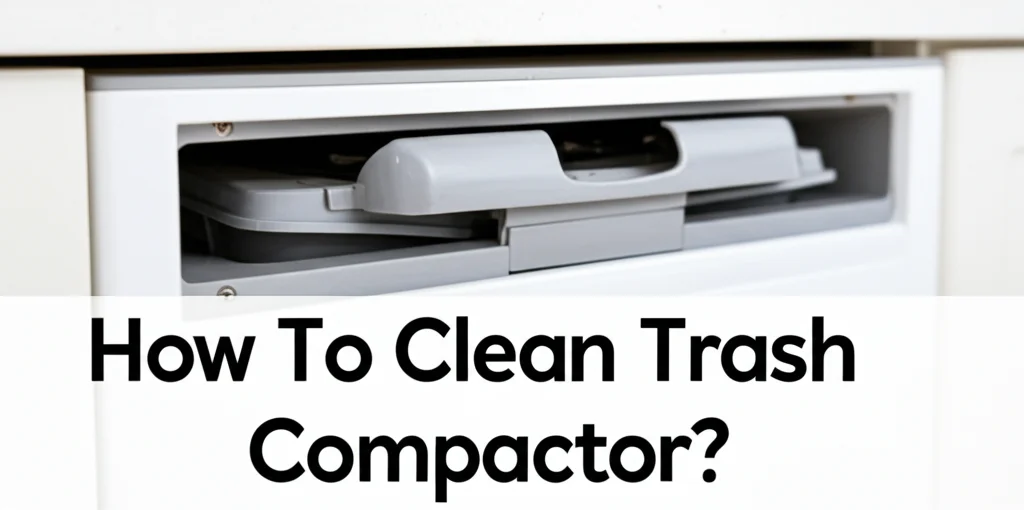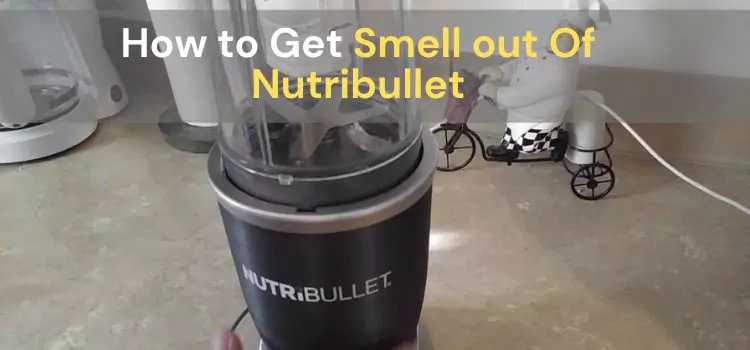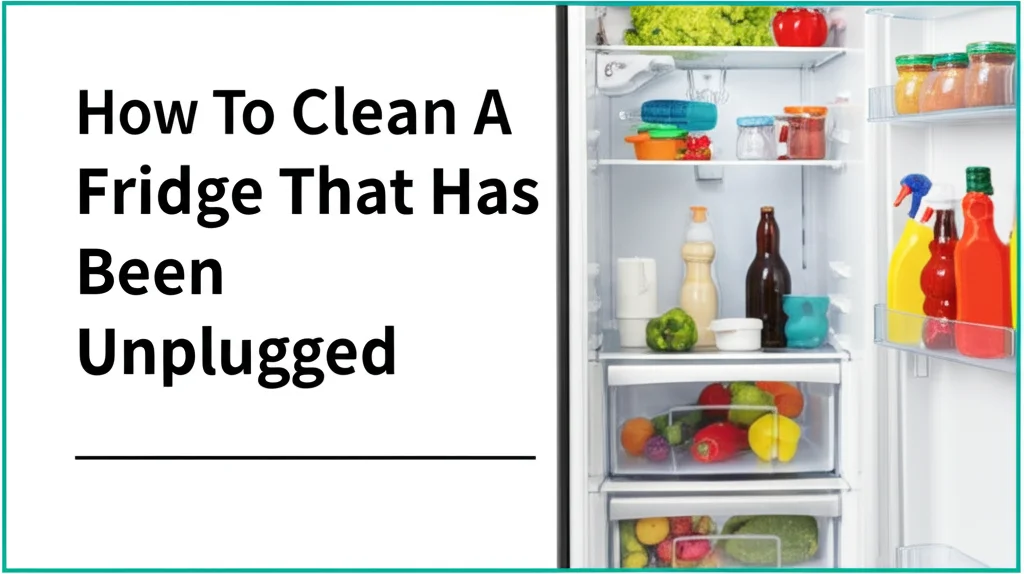· Kitchen Cleaning · 7 min read
How To Clean Trash Compactor?

A Sparkling Clean Trash Compactor: Your Guide to a Fresh Kitchen
Is your trash compactor starting to smell a little…off? Don’t worry, you’re not alone! A trash compactor, while incredibly convenient, can quickly become a breeding ground for bacteria and unpleasant odors if not cleaned regularly. Cleaning your trash compactor doesn’t have to be a daunting task. This article will walk you through a step-by-step process to effectively clean your trash compactor, keeping your kitchen fresh and hygienic. We’ll cover everything from daily maintenance to deep cleaning, ensuring your appliance functions optimally and doesn’t become a source of unwanted smells. Let’s dive in and learn how to clean a trash compactor the right way!
Quick Answer: To clean a trash compactor, empty the bag, spray the interior with disinfectant, wipe down all surfaces, and deodorize with baking soda. Regular cleaning prevents odors and maintains optimal performance.
Takeaway:
- Empty the trash bag frequently.
- Disinfect the interior regularly.
- Use baking soda to absorb odors.
- Deep clean monthly for optimal hygiene.
Why Regular Trash Compactor Cleaning Matters
Think about everything that goes into your trash compactor. Food scraps, packaging, and other waste materials accumulate quickly, creating a perfect environment for bacteria to thrive. This bacterial growth is the primary cause of those unpleasant odors. Regular cleaning isn’t just about smell; it’s about hygiene and preventing the spread of germs. A clean trash compactor also operates more efficiently, as compacted waste doesn’t stick to the sides and interfere with the compression mechanism. Ignoring this task can lead to more than just a stinky kitchen; it can impact your overall home cleanliness.
Daily Maintenance: Quick Steps for a Fresher Compactor
Daily maintenance is the key to preventing major cleaning headaches down the road. These quick steps take just a few minutes but make a huge difference. Start by ensuring you’re using trash bags specifically designed for your trash compactor. Standard trash bags can tear easily, leading to messes and odors. After emptying the bag, give the interior a quick spray with a disinfectant spray. This kills bacteria and neutralizes odors before they have a chance to build up. Finally, sprinkle a small amount of baking soda at the bottom of the compactor before inserting a new bag. Baking soda is a natural odor absorber and will help keep things smelling fresh.
Deep Cleaning Your Trash Compactor: A Monthly Routine
While daily maintenance keeps things manageable, a deep clean is essential at least once a month. This involves a more thorough cleaning of all surfaces within the compactor. First, unplug the trash compactor from the power outlet for safety. Remove the trash bag and any loose debris. Next, prepare a cleaning solution of warm water and mild dish soap. Use a sponge or cloth to wipe down all interior surfaces, paying attention to corners and crevices where food particles can accumulate.
Disinfecting for Hygiene
After wiping down the interior, it’s time to disinfect. You can use a commercial disinfectant spray or create your own solution using a mixture of water and white vinegar. Vinegar is a natural disinfectant and deodorizer. Spray the interior thoroughly and let it sit for 10-15 minutes to kill bacteria and germs. Then, wipe down all surfaces again with a clean, damp cloth. This step is crucial for maintaining a hygienic kitchen environment.
Addressing Stubborn Residue
Sometimes, despite your best efforts, stubborn residue can cling to the interior surfaces. For these tough spots, create a paste of baking soda and water. Apply the paste to the residue and let it sit for 30 minutes. Then, use a soft brush or sponge to scrub the area gently. Baking soda acts as a mild abrasive, helping to loosen and remove the stuck-on debris. If the residue is particularly stubborn, you may need to repeat this process. You can also find more information on removing tough stains on other surfaces at https://www.beacleaner.com/how-to-clean-kitchen-mats/.
Cleaning the Compactor Ram and Surrounding Areas
The ram is the moving part of the trash compactor that compresses the waste. It’s also an area that can accumulate grime and bacteria. Carefully wipe down the ram with a damp cloth and your cleaning solution. Be sure to avoid getting any liquid inside the mechanical components of the ram. Pay attention to the area around the ram, as this is where liquids and food particles often accumulate. Use a cotton swab or toothbrush to clean hard-to-reach areas.
Inspecting the Compactor Bag Holder
The bag holder is another area that often gets overlooked during cleaning. Remove the bag holder (if removable) and wash it thoroughly with warm, soapy water. If the bag holder is not removable, wipe it down with a damp cloth and disinfectant spray. Inspect the bag holder for any cracks or damage. A damaged bag holder can lead to leaks and messes.
Deodorizing Your Trash Compactor: Beyond Baking Soda
While baking soda is a great starting point, there are other ways to deodorize your trash compactor. Consider using citrus peels, such as lemon or orange peels, at the bottom of the compactor. Citrus peels have a natural, refreshing scent that helps to neutralize odors. You can also use a few drops of essential oil, such as lavender or tea tree oil, on a cotton ball and place it inside the compactor. Essential oils have antibacterial properties and can help to keep your compactor smelling fresh. For more information on eliminating odors in your home, check out https://www.beacleaner.com/how-to-get-rid-of-vomit-smell-in-bathroom/.
Troubleshooting Common Trash Compactor Cleaning Issues
Sometimes, you might encounter specific cleaning challenges. Here are a few common issues and how to address them:
- Lingering Odors: If odors persist after cleaning, try placing a bowl of activated charcoal inside the compactor overnight. Activated charcoal is highly absorbent and can help to eliminate stubborn smells.
- Sticky Residue: For sticky residue, try using a mixture of warm water and vinegar. The acidity of the vinegar helps to break down the sticky substances.
- Mold Growth: If you notice mold growth, disinfect the area with a bleach solution (1 part bleach to 10 parts water). Be sure to wear gloves and eye protection when working with bleach.
FAQ: Your Trash Compactor Cleaning Questions Answered
Q: How often should I change the trash bag in my compactor? A: You should change the trash bag whenever it’s full or at least every few days, even if it’s not full, to prevent odors and maintain hygiene.
Q: Can I use harsh chemicals to clean my trash compactor? A: Avoid using harsh chemicals like bleach or ammonia, as they can damage the interior surfaces and release harmful fumes. Stick to mild dish soap, vinegar, and disinfectant sprays.
Q: What type of trash bags should I use in my compactor? A: Always use trash bags specifically designed for trash compactors. These bags are thicker and more durable, preventing tears and leaks.
Q: How do I prevent my trash compactor from smelling? A: Regular cleaning, using baking soda, and employing deodorizing methods like citrus peels or essential oils will help prevent unpleasant odors.
Keeping Your Kitchen Fresh: A Final Word on Trash Compactor Cleaning
Cleaning your trash compactor is a small task that makes a big difference in the overall cleanliness and hygiene of your kitchen. By following these simple steps, you can prevent odors, maintain optimal performance, and create a more pleasant living environment. Remember, consistent daily maintenance combined with monthly deep cleaning is the key to a sparkling clean trash compactor. Don’t let your trash compactor become a source of unwanted smells – take control and keep your kitchen fresh! For more cleaning tips and tricks, explore our other articles, such as https://www.beacleaner.com/how-to-clean-kitchen-sink-mats/ and https://www.beacleaner.com/how-to-clean-burnt-baking-pan/.




